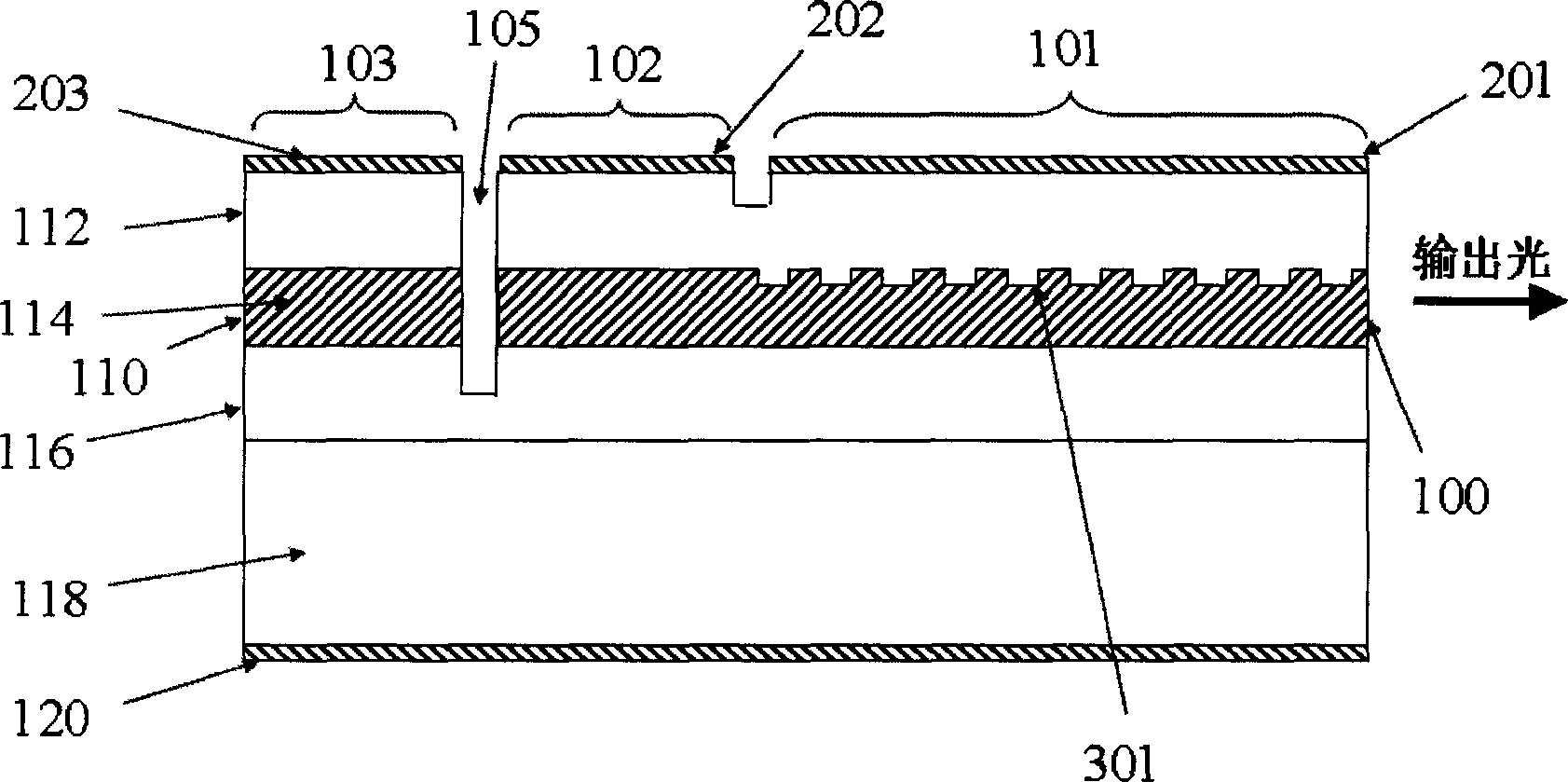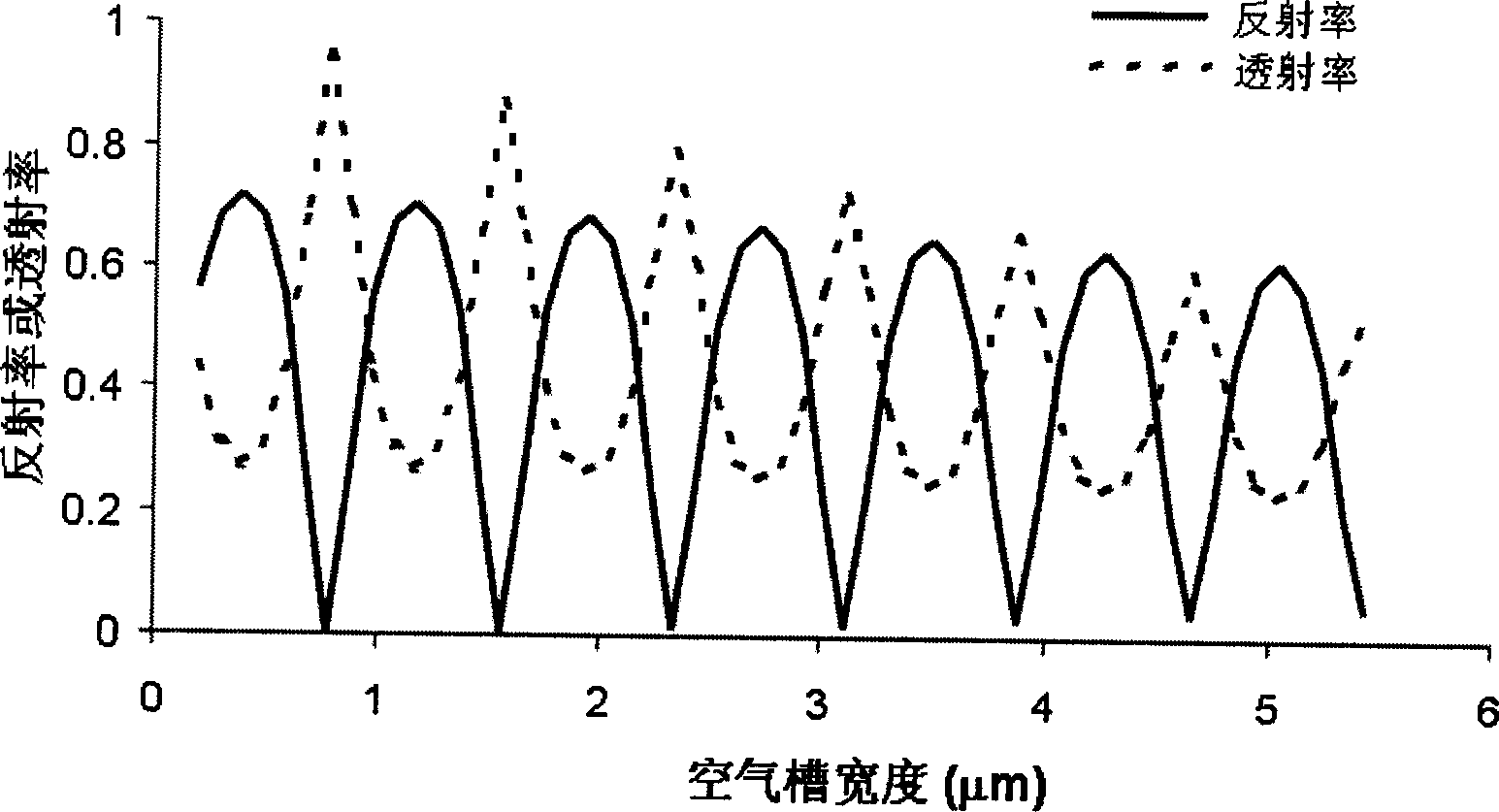Q-modulation semiconductor laser
A laser and semiconductor technology, applied in the direction of semiconductor lasers, lasers, laser parts, etc., can solve the problems of difficult integration, wavelength chirping, and complicated production, and achieve the effect of high extinction ratio, low wavelength chirp, and high speed.
- Summary
- Abstract
- Description
- Claims
- Application Information
AI Technical Summary
Problems solved by technology
Method used
Image
Examples
Embodiment approach
[0082] FIG. 13( a ) shows a third embodiment of the present invention, where the Q-modulator is integrated with a Fabry-Perot laser, which includes a gain region 101 and a modulator region 103 . Each zone has a separate top electrode (201 and 203 respectively) and a common ground electrode 120 at the bottom. The modulator region 103 and the gain region 102 are separated by a separation element 105, here a deep vertically etched air slot through the waveguide core. In addition, as shown in Fig. 13(b), we can also integrate a mode selector 108 composed of one or more Fabry-Perot cavities on the same chip to obtain single-mode operation of the laser. The mode selector 108 acts as an optical filter and can be separated from the gain region 101 by a separation element 107 (here another deeply etched air slot). An upper electrode 208 can be deposited on top of the mode selector region to inject current to make the underlying waveguide substantially transparent and change its refrac...
PUM
 Login to View More
Login to View More Abstract
Description
Claims
Application Information
 Login to View More
Login to View More - R&D
- Intellectual Property
- Life Sciences
- Materials
- Tech Scout
- Unparalleled Data Quality
- Higher Quality Content
- 60% Fewer Hallucinations
Browse by: Latest US Patents, China's latest patents, Technical Efficacy Thesaurus, Application Domain, Technology Topic, Popular Technical Reports.
© 2025 PatSnap. All rights reserved.Legal|Privacy policy|Modern Slavery Act Transparency Statement|Sitemap|About US| Contact US: help@patsnap.com



